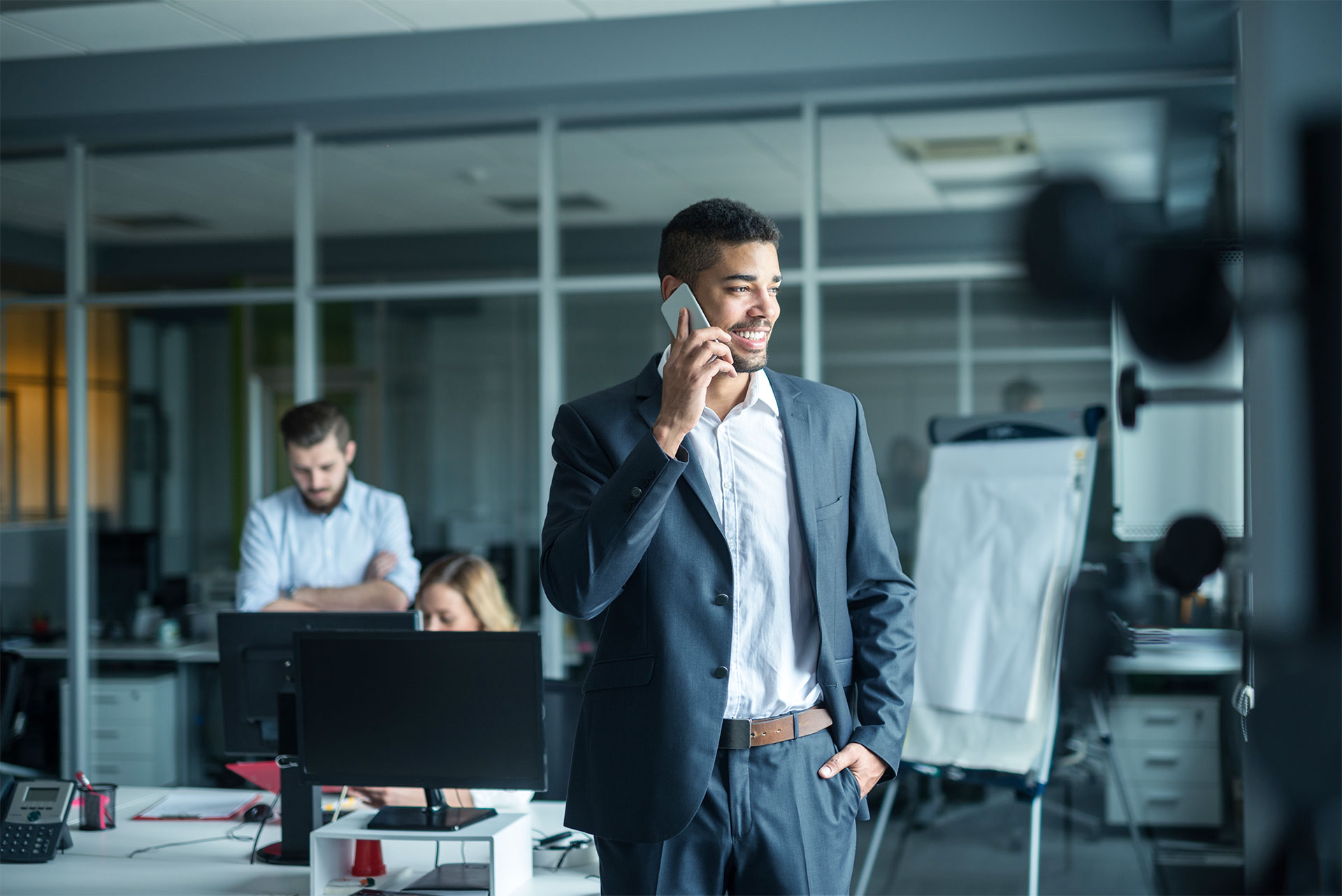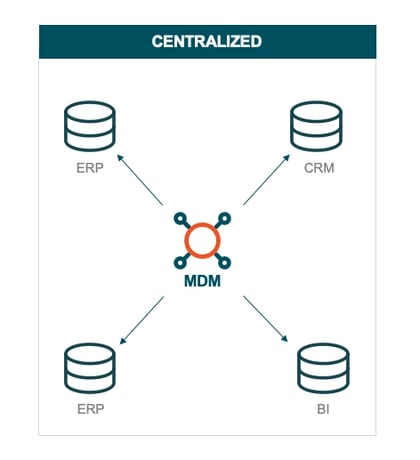How to choose a master data management architecture and implementation style that supports your business objectives and strategy
The foundation your Master Data Management (MDM) system is built on will depend on the implementation style that gives you the best chance of project success. This will largely depend on your business process and your critical data management.
There are several different implementation styles (also called approaches, methodologies, and architectures) to choose from. The main differences are whether you control your data from a central hub or synchronize the hub with your existing data sources.
But why is it essential to carefully consider the style of implementation?
Most organizations prioritize maintaining a single source of truth for all their data sets, helping them meet compliance and regulatory obligations.
Focus is placed on improving data quality and processes, establishing guidelines for data governance, and ensuring data assets can be easily managed and accessed across the business for smooth decision-making.
Each of these factors can be achieved using the most common implementation styles.
However, the benefits of master data management systems vary widely between organizations, and your type of deployment will depend on your core business, corporate structure, and company goals.
Your master data management solution provider can advise you on the best approach based on your business needs. For example, you can learn more about master data management in retail here.
Here, we examine four common master data management implementation styles to help you decide which one most closely matches your organizational requirements and paves the way for scalability and growth. Please note, you can Turn location-based data into a valuable, actionable asset as well, with Stibo Systems Location Master Data Management (Location MDM).
The 4 most common master data management implementation styles
The four most common master data management implementation styles and architectures followed by companies are: 1) Registry style, 2) Consolidation style, 3) Coexistence style and 4) Transaction/Centralized style.
MDM implementation 1: The Registry style
The Registry style is mainly used to spot duplicates by running cleansing and matching algorithms on data from your various source systems.
It assigns unique global identifiers to matched records to help identify a single version of the truth. This style doesn’t send data back to the source systems, so changes to master data continue to be made through existing source systems.
Instead, it cleans and matches the identifying cross-referenced information and assumes the source system can manage the quality of its own data strategy.
With this system, the enterprise data and customer information needed to match and provide a link between corresponding records is stored, and a view of this quality data can be accessed as required.
When a single, comprehensive view of a customer data is needed, each reference system is used to build a 360-degree view of this data in real-time. However, central governance of the data is required to ensure data consistency and reliability.

The benefits of a Registry style implementation
If you have a large number of source systems spread across the world, it can be difficult to establish an authoritative source. A Registry-style approach can be used to analyze the data while avoiding the risk of overwriting information in the source systems. This will help you avoid potential compliance failure or other regulatory repercussions (which may vary from country to country) that could occur if source data is changed.
Registry style provides a read-only view of data without modifying master data, which is useful for removing duplications and gaining consistent access to master data.
It offers low-cost, rapid data integration with the benefit of minimal intrusion into your application systems.
MDM implementation 2: The Consolidation style
With a Consolidation style, the master data is generally consolidated from multiple sources in the hub to create a single version of truth, otherwise known as the golden record.
A golden record is stored in the central hub and used for reporting and reference. However, any updates made to the master data are then applied to the original sources.

The benefits of a consolidation style implementation
With a Consolidation style, you can pull master data from a number of existing systems and channel it into a single managed Master Data Management hub. This data can then be cleansed, matched and integrated to offer a complete single record for one or more types of master data domains.
Consolidated hubs are inexpensive and quick to set up, providing a fast and efficient way to facilitate enterprise-wide reporting. This style is mainly used for analysis, giving you a trusted source of data for reporting and analytics.
ebook
Ready to build your business case for Master Data Management?
Download the ebook and get the practical insights you need to identify value, win stakeholder buy-in, and drive project success.

MDM implementation 3: The Coexistence style
A Coexistence style allows you to construct a golden record in the same way as the Consolidation style, but your master data is stored in the central MDM system and updated in its source systems.
Master data changes can happen in the MDM, as well as in the application systems.
All attributes of the master data model must be consistent and cleansed before uploading them into the Master Data Management system. This data cleansing ensures accurate data entry and operational efficiency.

The benefits of a Coexistence style implementation
The main benefit of this style is that data is mastered in source systems and then synchronized with the hub, so data can coexist harmoniously and still offer a single version of the truth with no redundancy or inaccuracy.
Another benefit of this approach is that the quality of master data is improved, and access is faster. Reporting is also easier as all master data attributes are in a single place.
A Consolidation style hub can naturally evolve into a Coexistence style hub if your business decides it requires the advantage of being able to link centrally governed data back to the source systems.
MDM implementation 4: Transaction/Centralized style
The Centralized style allows you to store and maintain master data attributes using linking, cleansing, matching and enriching algorithms to enhance the data. The enhanced data can then be published back to its respective source system.
With this architecture, the master data hub supports merging master records, and source systems can subscribe to updates published by the central system to ensure complete consistency.
The Centralized style also allows you to create master data making your MDM the system of record.
This means you can centralize data creation functions for supplier, customer and product domains in a distributed environment by creating the entity in MDM and enriching it through external data sources or internal enrichment.
Making the MDM the system of origin of information enables you to create workflows and validation capabilities to update your ERP and other business systems that need accurate master data.

The benefits of a Transaction/Centralized style implementation
- Your master data is accurate and complete at all times while security and visibility policies at a data attribute level can be supported
- You gain a centralized set of master data for one or more domains
- With the MDM as system of origin, you can leverage the powerful data governance capabilities of the MDM
The centralized style can often evolve from consolidation or coexistence styles.
Your master data management implementation style
The importance of master data management cannot be overstated. Depending on your business needs, you can use the information above to identify the right approach and methodology for your organization's implementation plan.
Another key point is that a single Master Data Management (MDM) system can accommodate different management styles, tailored specifically to the type of data being handled.
This allows each data category to be managed in a way that best suits its unique characteristics.
However, before you embark on any implementation, you need to ask some fundamental questions about your current data quality and future data policy.
What are your requirements for data quality?
If you’re hampered by data that’s siloed in disparate systems, your first step should be to explore what you’d like to do with your data if you had convenient access to a single comprehensive record.
The next step is to think about who in your organization needs access to that data.
When it comes to data security, do you want data to be accessible from different devices and locations globally?
If not, consider a MDM solution that limits access, protects your data management processes, and helps you maintain high data standards. Fortunately, you can evolve from one implementation style to another as your company’s needs grow or your organization expands.
The key factor is to get the data governance policies right from the beginning and then choose a master data management platform that helps those policies excel.
Use master data mangement to streamline your processes, identify key data, eliminate inconsistent data, and ensure your organization’s data can help your business thrive.
Stibo Systems Recognized as a Leader in the SPARK Matrix™: Product Information Management, Q4 2025 Report
Read the report to see why Stibo Systems is a Leader and how enterprises are looking for more than basic PIM, embracing safeguarded AI and future-proofing with cloud-based solutions.





































































































































































































